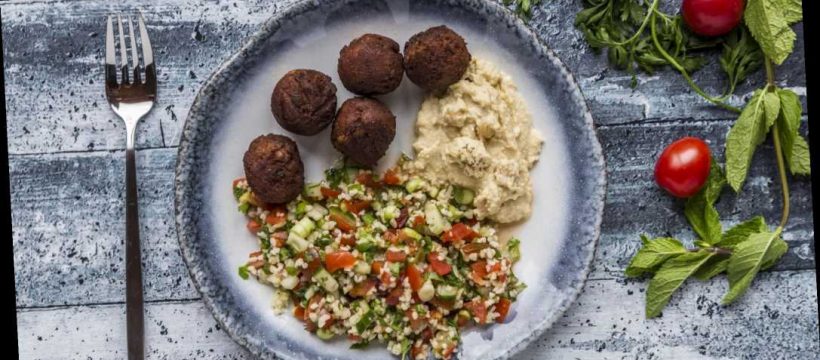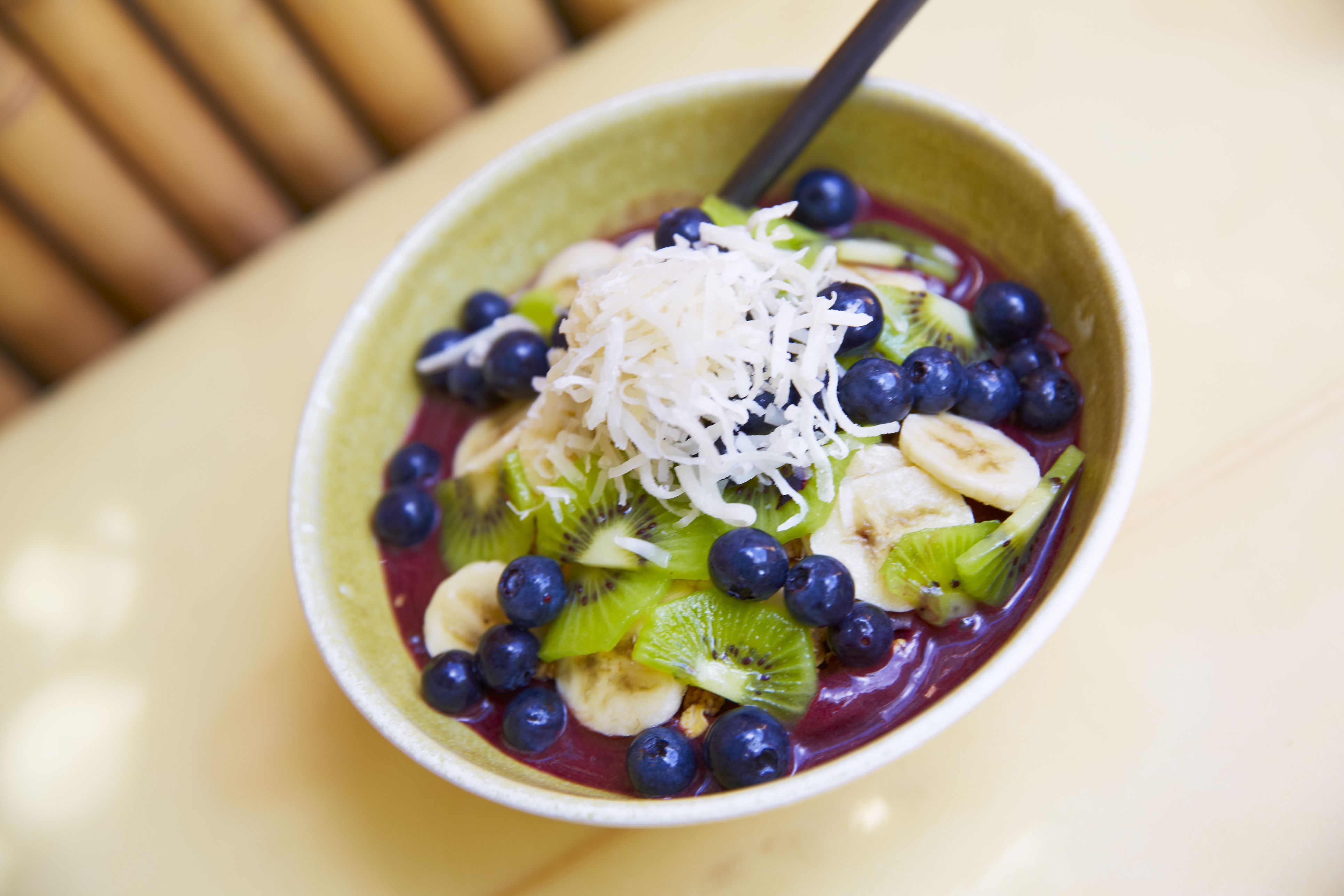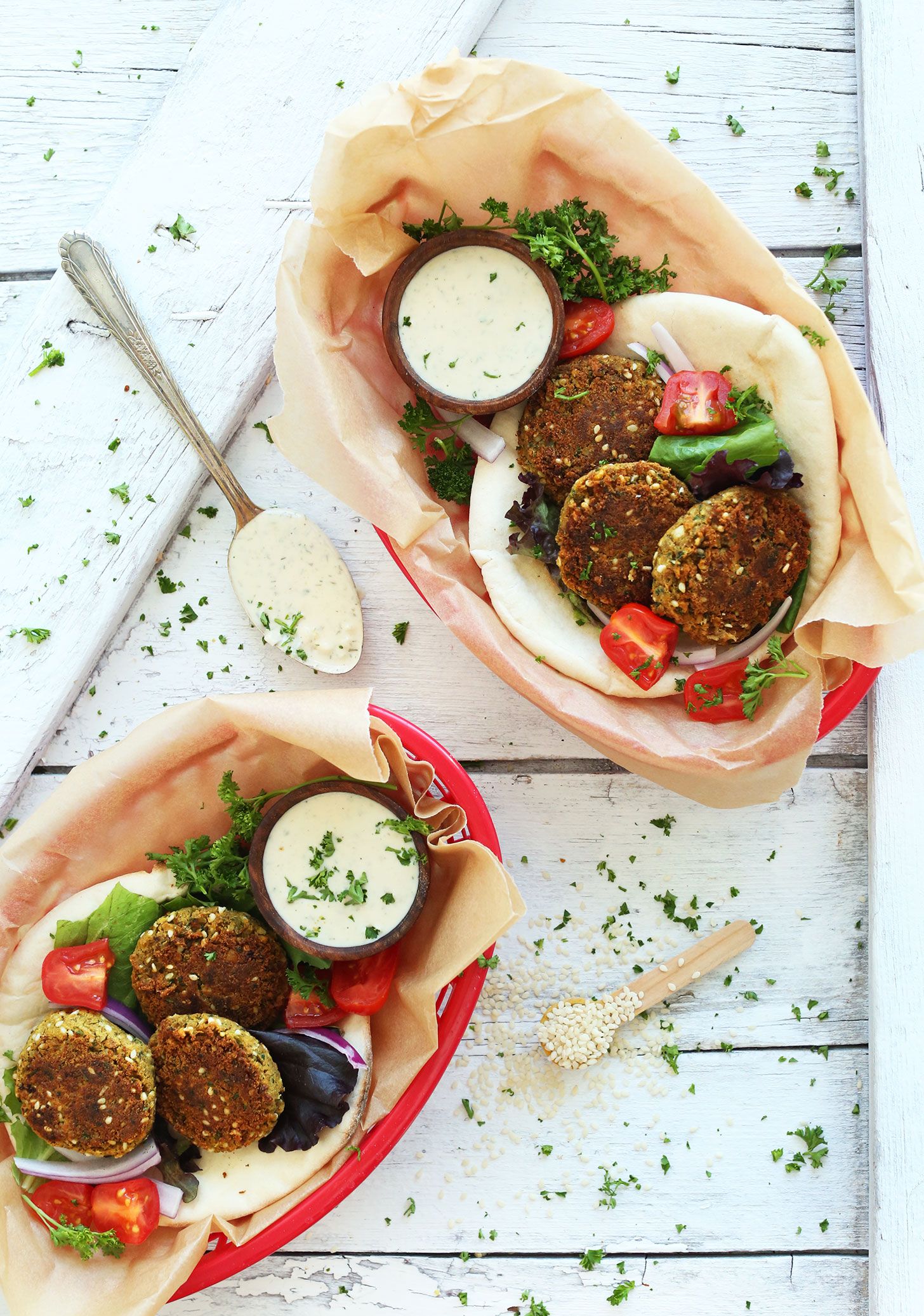If you’re a big street food fan, chances are you’ve had a late-night run-in or two with a falafel-stuffed pita as tahini and hummus dripped down your chin (drool). Just me?
Here’s the lowdown on falafel: It’s a Middle Eastern dish made from blended chickpeas—or, in some other regions, fava beans—mixed with spices and herbs.The exact history of falafel is up for debate, says Ale Zozos, an RDN with a Mediterranean background, but it likely originated in Egypt, as Catholic Christians were looking for a nourishing replacement for meat during the long seasons of Lent and fasting.In some ways, falafel’s nutritional profile stacks up to red meat, since it’s also full of nutrients like iron, folate, magnesium and vitamin B, Zozos says.
To make falafel, ingredients are usually put into a food processor until the result is a gritty blend. Aside from the beans, other ingredients that are typically used to make falafel include onions, garlic, and spices like cumin and coriander. That blend is then made into balls, refrigerated, and deep-fried or baked.
The most popular method of preparing it is frying, which can lead to the question: Is falafel healthy? Zozos says it definitely can be if you alter the way you serve and prepare it to align with your health goals. “So, for example, if you want to watch your fat intake and you don’t want to fry them, you can bake them or hand sauté them,” says Zozos. That’s just one option.”If you’re watching your carb intake, you don’t have to serve them on pita—you can serve them with fresh vegetables or on top of a salad,” she explains.
You can also eat falafel on its own, but it’s more often than not served with the aforementioned pita bread, plus hummus or tahini, and Israeli salad…because, yum.
Falafel’s Nutritional Profile
Zozos says that the health benefits of falafel are plenty. It tends to be relatively low in cholesterol, low on the glycemic index scale, and high in protein.Also, it’s full of complex carbs and fiber, which are good for a healthy gut and regular bowel movements, adds Zozos.
If you want to see how falafel measures up nutritionally, here’s how a serving of frozen falafel from Trader Joe’s stacks up:
- Calories: 320
- Fat: 19 g
- Saturated fat: 3 g
- Cholesterol: 0 mg
- Sodium: 490 mg
- Carbs: 30 g
- Fiber: 6 g
- Sugars: 5 g
- Protein: 8 g
Is falafel healthy?
“There is no bad or good food,” says Robin Danowski, RD, assistant professor of nutrition at La Salle University. “It depends on how you cook it and how much of it you eat.”
Falafel is a great dish to encourage people to eat a more plant-based diet, which benefits the body as well as the environment, Amy Shapiro, RD says. It’s high in protein and fiber from the chickpeas (one cup of which has 15 grams of protein and 14 grams of fiber).
Plus, chickpeas contain a lot of iron, folate, magnesium, phosphorus, and B vitamins. The various spices in falafel—like cumin, coriander and cardamom—are also full of disease-fighting antioxidants. “It’s a very satisfying meal that will maintain blood sugar levels and prevent excess sugar cravings,” she says.
But even some of the healthiest foods will have a couple pitfalls—or pit(a)falls, if you will— and unfortunately, falafel is no exception. Most falafels are deep-fried in oil. And while Shapiro says the oil is often unsaturated, it still ups your calorie intake considerably. “For some, it may add too much fat to the diet,” she notes. Plus, if a restaurant or vendor heats low-quality oils above their smoke point (think: canola oil), it has the potential to produce carcinogens, says Shapiro.
Generally speaking, though, “the frying doesn’t outweigh the benefits, and it can actually help to lower cholesterol levels,” says Shapiro. “But if it’s made with poor ingredients and cheap oils, then I say ‘pass.’”
There’s also the sodium content to consider. “If you buy a pita with falafel at a restaurant or vendor, sometimes it’ll have up to 1,500 milligrams of sodium, which is a full day’s worth,” says Danowski, adding that you start to see adverse health effects beyond 2,300 milligrams a day. “In a pita with sauces, you’re knocking out your daily minimal amount with that one food.”
As far as calories go, it’s important to remember that where the calories come from is way more important than the number. In the case of falafel, most of the calories come from fat, at around 18 grams per half-cup serving, according to Danowski. And while most of these fats are the heart-healthy unsaturated kind, “if you’re concerned about weight loss, you need to keep that in mind when you consume it,” she says.
How can I make falafel healthier?
“I would recommend baking it when you have the option,” says Shapiro. “If frying is what you prefer, then use a high-quality oil that can sustain high heat, like grapeseed or avocado to prevent carcinogen production.”
If you want to give falafel a go at home, try this nutritious recipe:
Easy Vegan Falafel by Minimalist Baker
Seasoning like parsley and garlic make this already-flavorful dish from Minimalist Baker a true trip to Tel Aviv for the taste buds.
GET THE RECIPE
Per serving (one falafel): 91 calories, 6 g (sat 0.5 g) fat, 8 g carbs, 89 mg sodium, 1.6 g fiber, 2 g protein
If you eat it in a pita, Danowski suggests opting for whole wheat, since it contains fiber to help promote healthy digestion. Then, avoid packing on the pickled vegetables (like those pink turnips!), which can be incredibly high in sodium. Opt instead for a ton of fresh crunchy veggies, like carrots and cucumber. Hummus is Danowski’s condiment of choice, since it’s a great source of plant-based protein. If possible, ask for it on the side to control your salt intake.
If carbs are a concern, you can always go the platter route. “Ask for it over as many greens as possible without the pita,” says Shapiro. “Pick hummus, babaganoush, or yogurt sauce as add-ons.”And for a deconstructed, lighter take on a falafel pita, she says you can order cut up raw veggies and hummus for dipping.
Source: Read Full Article




